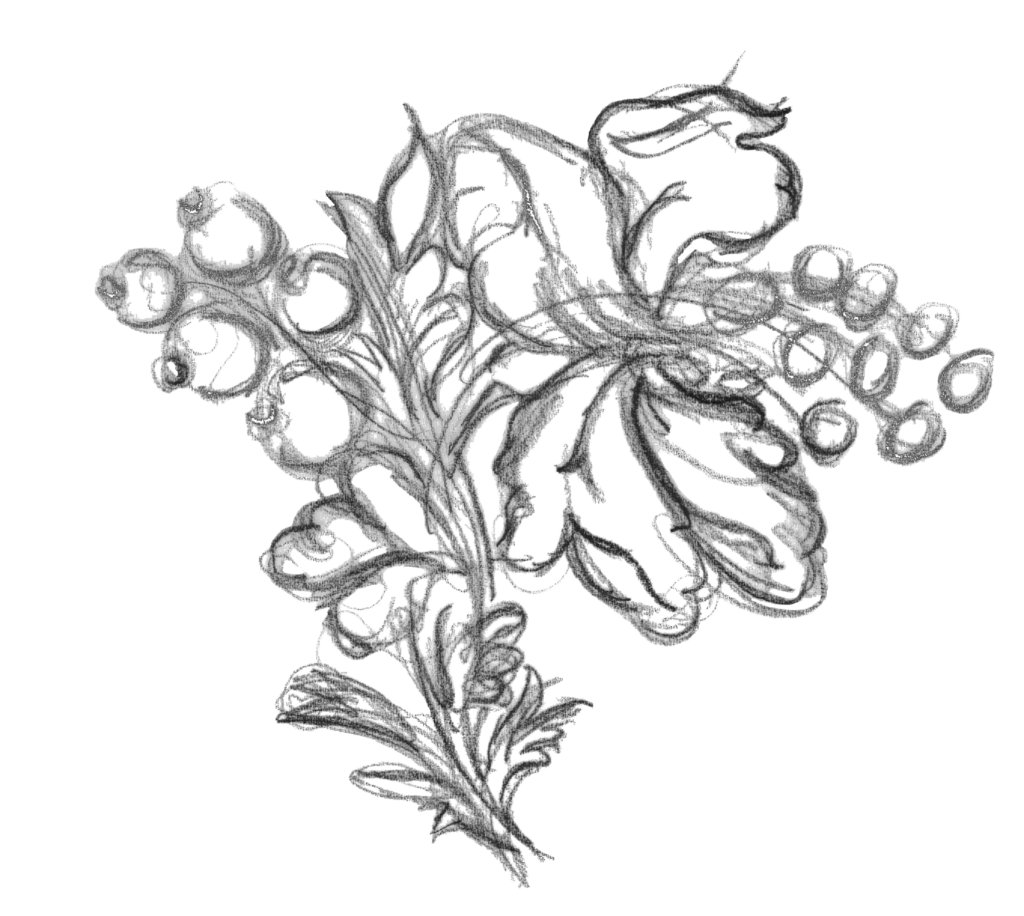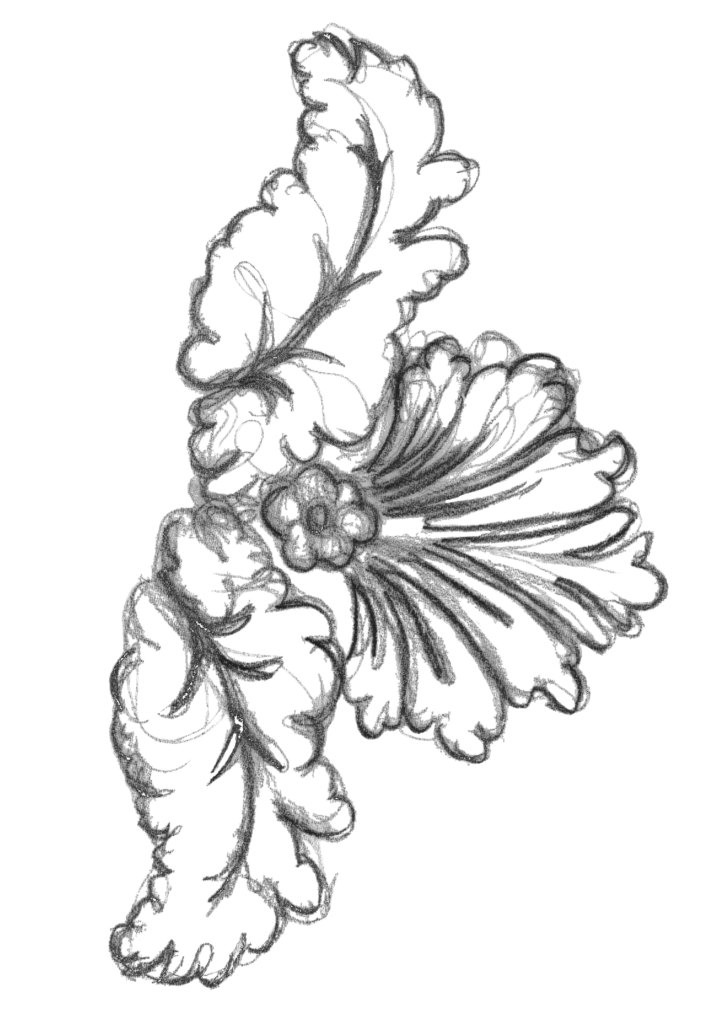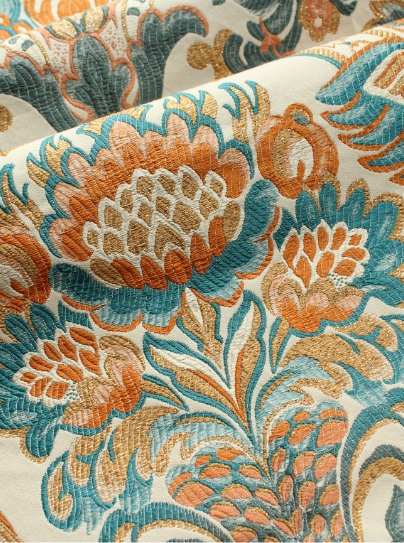Kedleston Hall – Championing a 30 year restoration.
This spring sees the 30 year restoration of The State Apartments at Kedleston Hall come to a close. Beginning in 1987, the series of Robert Adam rooms have undergone an 18th century make over taking three decades to complete. From Gilding to weaving and upholstery to gold filament thread, the restoration has tapped into some of the finest British Craftsmanship.
Designed by Robert Adam for Sir Nathaniel, 1st Lord Scarsdale, the State Apartments were never intended for daily family living; rather they were designed as a procession of rooms to show off wealth, power and status. Kedleston Hall is thought to be Adam’s first truly major commission, marking a milestone not only in his career but in the history of English taste.
Before the restoration programme, the State Apartments had stayed relatively the same as when they were first designed by Adam in the 18th Century, however, centuries worth of entertaining and sunlight had somewhat damaged elements of the rooms. The National Trust first contacted Humphries Weaving Company back in 1993, 6 years into the restoration. The first order was placed in 1994 for 270 metres of silk and wool Damask. Getting a historically correct colour match was one of the tasks involved and so after numerous colour trials, colour number 5 was selected as seen below.
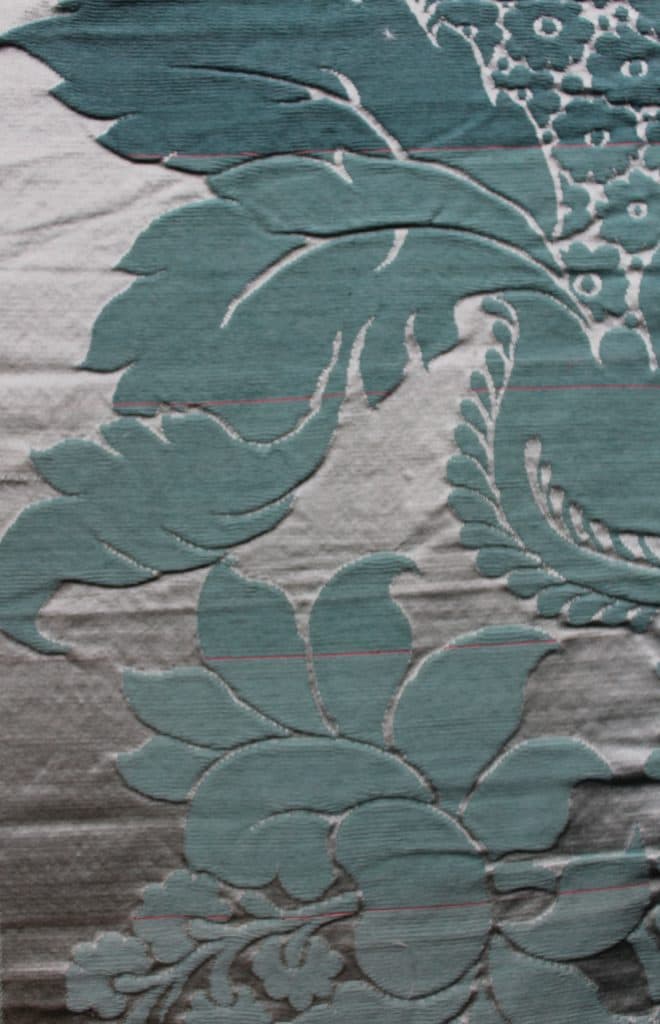
5 colour trials of the Kedleston Blue. The top colour was chosen as being the best historic match.
The first weaving took place in January of 1994 and was the Kedleston design which has two principal motif in a ‘Half Silk’ quality. This quality was introduced in the mid 18th century in an attempt to hold onto the British wool industry despite the coming fashions of silk. There was not a full repeat of the Kedleston design intact and so Humphries Weaving Company reassembled the pattern from various pieces and redrew the design back at the Humphries Studio. Subsequently, two more orders of the silk and wool were woven in the coming years.
In 1999 Humphries were asked to weave more fabric; however this pattern and quality differed ever so slightly from the Kedleston design first woven 5 years prior. Upon first glance one would be forgiven for thinking that the Kedleston and New Kedleston (The second design) were the same pattern. The New Kedleston is an all silk quality and is slightly wider and therefore slightly longer than the Kedleston.
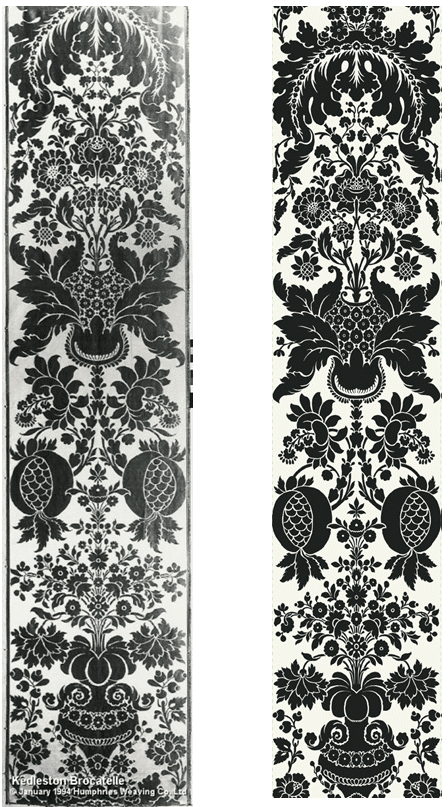
Left: Kedleston design, thought to have been woven in the UK using Silk and Wool.
Right: New Kedleston design, thought to have been woven in France in an all silk quality.
The Kedleston pattern can also be seen at Shugborough hall, Staffordshire where we wove silk damask for the State Bed and window drapes. A smaller scale called the ‘Bessant’, can also be seen at Petworth House, West Sussex. The ‘Bessant’ has only one principal motif.
During the 18th Century attempts were made to outwit the French and stop the importation of foreign goods. The British stipulated that all cloth had to be woven at 21” wide as the French were weaving at 22” in width. This all back fired as the French smuggled in their 22” goods and sold them on the black market whilst changing the size of their reeds to 21” to sell legitimately. Both the Kedleston and New Kedleston designs are dated from the 18th Century, which would match the same period as the 21” width stipulation. This leads us to believe that the New Kedleston design could have been French.
The length of both designs is quite significant. The fabric was woven prior to the invention of the Jacquard Loom and so would have been woven on a draw loom. The process of draw loom-weaving was lengthy and the larger the design the longer the set up time. Each line of the design required the weaver to open the shed with their foot whilst the draw boy pulled the correct bunch of ‘simple’ cords along the length of the loom. The draw loom set up to weave the designs would have been extraordinary and the cost involved is not to be underestimated. The pattern would have been exquisite for its time and a real sign of Lord Scardale’s wealth.
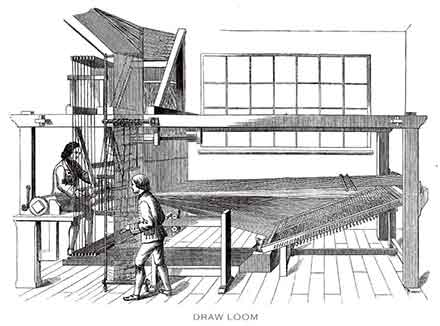
A draw loom on which the Kedleston and New Kedleston designs would have been originally woven on in the 18th Century.
Not only could a man’s wealth be measured in the size of the pattern of cloth, but also its colour and Lord Scardale was no exception to this. The whole of The State Apartments and more were decorated in Blue cloth, as recorded in the 1804 inventory, the most expensive colour of the time. Indigo, known as ‘The King of Blues’ comes from India and was the Crème de la Crème of the dye world, thus implying that no expense was spared. Adam had decided that the walls of Kedleston hall were to be either hung with blue damask or painted a stone colour, hence the volume of fabric used to decorate. The only other damask used in upholstery at Kedleston Hall is the Arkesdon crimson covering the Saloon chairs, woven narrow width to recreate the original 18th Century fabrics. In order to historically colour match the crimson a small fragment of the original, untouched cloth was found under a nail of one of the chairs. This historically correct red can also be seen at Holkham Hall in the ante library.
Humphries Weaving have been working with the National Trust for 24 years to restore the textiles of Kedleston Hall to their former glory. A combination of ‘Kedleston’ and ‘New Kedleston’ designs, along with some plain tammy can be at the Hall. The all silk, ‘New Kedleston’ design graces the walling, windows, furniture and State Bed of the State Rooms. Whilst the silk and wool, ‘Kedleston’ hangs upon the walls and covers the suites in the Drawing Room, Library and Music Room. The plain glazed Tammy was woven to compliment the damask and lines the chairs found in the Music Room.
A grand total of 2, 451 metres of both silk and silk and wool have been supplied to Kedleston Hall since 1994. One of the highlights of the State Apartments is the magnificent State Bed which has been restored under the watchful eyes of skilled craftsmen from all over the UK. Much of the fabric supplied can be seen draped from the bed and sculpted within the bed teaser. The gilding has been carefully reapplied and the trimmings and bobbin lace of the bed are made from gold filament yarn. All involved at Kedleston Hall have done a wonderful job in restoring the rooms to their former Robert Adam glory days, a truly well spent 30 years.
Kedleston Hall, Derbyshire is now open for the 2017 spring/summer season.
